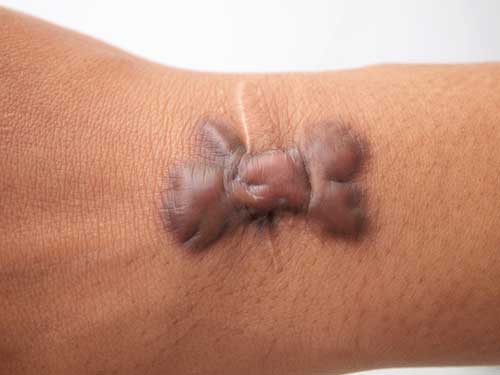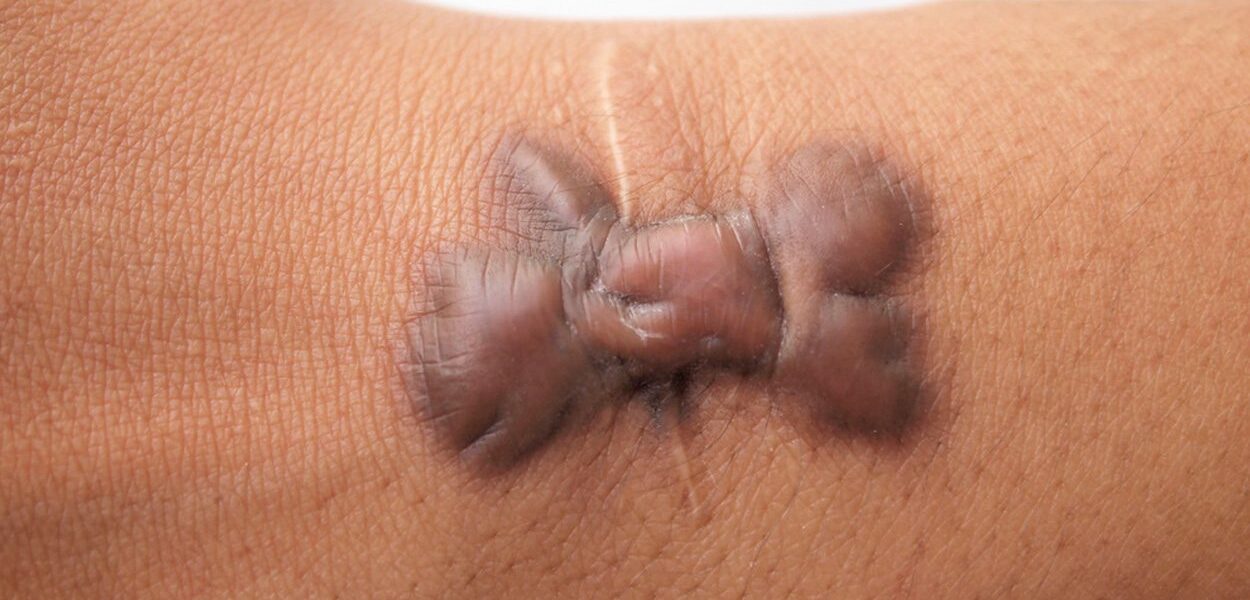Keloid scar: what must you do?
Keloids are scars that proliferate. They have extremely annoying characteristics and fall into the category of ‘problem scars’. Not only are they much more visible and unsightly, they also result in more complaints than ordinary scars:
- Itching

- ‘Pulling’ of the skin
- Bright red or purple colour
- Very painful, for example when lying on the scar
Keloid scars do not heal automatically. Without treatment they will continue to be active – and they will grow.
Do you suffer from keloid scars?
Certain people are more prone to them. The chance of getting these problematic scars is higher for people with a darker skin colour. Have you previously suffered from a keloid scar? If so, you will know that you have to take extra precautions in the event of a wound.
Treatment of keloid scars: where do you start?
We recommend preventive treatment with a good scar cream, such as ALHYDRAN. Start immediately after the wound has closed. This keeps your skin flexible and cares for your skin in the best possible way. Early treatment with ALHYDRAN scar cream significantly decreases the chance of scar problems and complaints.
ALHYDRAN works in a way that many other scar creams can’t match: in addition to hydrating the skin ALHYDRAN seals your damaged skin from the air, preventing loss of moisture through evaporation. Your skin has a better chance of the best possible recovery if it is continuously fed with sufficient moisture.
No effect after 2 months?
Is your scar still red and/or does it continue to ‘pull’ after 1 or 2 months? Consult a specialist. Supplementary therapy – which may only be done by a specialist – will then be started.
Without supplementary treatment the chance of the scar swelling and/or proliferating is high. So don’t delay in consulting a specialist!
Do you already have a keloid scar?
Do you have a keloid scar which is considerably swollen and/or proliferating? Start using ALHYDRAN! Your keloid scar won’t reduce or stop proliferating, but the scar cream will reduce complaints such as itching and tension of the skin.
However, you must also visit your general practitioner, who can refer you to a specialist. In the most serious cases, plastic surgery may be required to restore the appearance of your skin following removal of a scar.
In any event, never wait too long to take action – if you have (or are at risk of) keloid scars!
